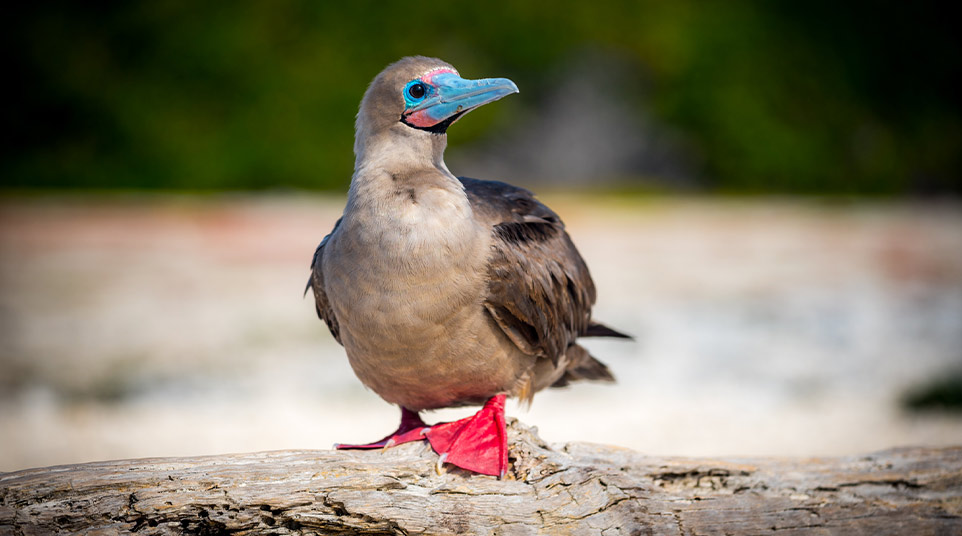- Home >
- Travel Guide >
- Galapagos Islands >
- Animals & Wildlife >
- Galapagos Red-footed Booby
Galapagos Red-footed Booby Facts
Name: Red-footed Booby
Scientific Name: Sula sula
Family: Sulidae
Length: 66 - 77cm (26 - 30 in)
Weight: 850 - 1000 g (1.7 - 2.2 lbs)
Wingspan: 91 to 101 cm (36 - 39 in)
Category: Sea Birds
Number of Species: 47
Endemic Species: 13
In total, 47 species of sea birds have been recorded in the Galapagos, 19 of which are resident to the Islands. The sea birds therefore account for nearly one third of all the species ever recorded in the islands and about the same proportion of the resident species.
Seabirds can be conveniently divided into 12 groups, as show in the table below. This shows the number of species recorded in each group and summarizes their status. If also shows the number of endemic species and the number of other species which are represented by endemic subspecies. Species are treated as migrants if they occur annually, vagrants being those recorded less frequently.
Category: Boobies
Family: Sulidae
Length: 66 - 92 cm (26 - 36 in)
Wingspan: Up to 152 cm (60 in)
Boobies are large, conspicuous seabirds with cigar-shaped bodies, long dagger-shaped bills and, in flight, long pointed wings and characteristic wedge-shaped tails. They have rather short legs but large webbed feet which, in the case of the Blue-footed and Red-footed boobies, are used during courtship, the birds deliberately lifting their feet and showing them to their mates. The sexes are alike. Boobies feed at sea by plunge-diving from the air.
Common but rather localized resident. Population estimated at 15,000 pairs (including 9,000 pairs on Genovesa / Tower Island). Breeds throughout the year, nesting colonially in trees (the other boobies nest on the ground).
Identification:
ADULT: Two colour forms: brown and white. Both forms have diagnostic combination of red feet and blue bill. JUVENILE: Resembles brown form of adult but feet are dark; distinguished from other juvenile boobies by wholly brown underparts.
Behavior:
Courtship display, performed on branches near nest, involves birds lifting their feet and waving them in the air. Partially nocturnal, feeding well away from land. This perhaps explains why it is less frequently encountered at sea during our Galapagos cruises than other boobies despite being the most numerous species in Galapagos.

